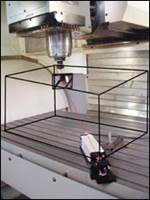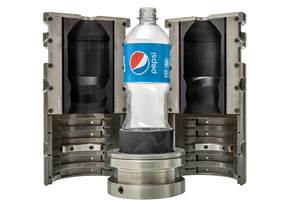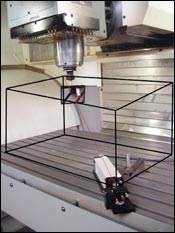New RP Technology Reduces Costs, Leadtimes
A rapid tooling process has been developed using stereolithography (SL) and a nanocomposite resin, which can result in significant savings in both leadtimes and costs.
A rapid tooling process has been developed using stereolithography (SL) and a nanocomposite resin, which can result in significant savings in both leadtimes and costs. The process can be used to make short-run production tools and also offers a number of design advantages.
NanoTool™ from DSM Somos® (Elgin, IL)—a leading material supplier to the rapid prototyping industry—gives the physical properties, high precision, and surface qualities required for a wide range of rapid tooling (RT) and rapid prototyping (RP) applications, according to Brian Bauman, Product Manager of DSM Somos.
One company that found the benefit of the SL process combined with NanoTool is Axis (Limoges, France)—a service bureau offering a number of RP, RT and rapid manufacturing (RM) services—working together with the European-based molding company Pichot, they used NanoTool to make production tools for the injection molding of pill dispensers for the medical industry.
“Conventional metal tools would have taken four to six weeks to produce, but by using SL, the complete process from CAD drawing to fitted injection molds took just eight working days,” notes Axis Technical Manager Ludovic Martin.
The Material
According to Bauman, NanoTool produces very strong, stiff, high temperature-resistant composite parts on a conventional SL machine. This material—heavily filled with noncrystalline nanoparticles—allows for faster processing, exhibits superior sidewall quality (reducing finishing times) and features excellent detail resolution when compared to other composite SL materials.
The material also is very versatile. Its smooth surface quality and high initial modulus make it an excellent resin for structural metal plating—a growing application called metal clad composites or MC2, which saves time and money as an alternative to fully metal prototypes. The material is also suitable for creating strong, stiff parts that may need to resist high temperatures, including wind tunnel models for aerospace and automotive applications. A third major application area is RT for injection molding, additionally, the MC2 process can be utilized to further increase the tool life of NanoTool molds.
Advantages
Martin of Axis believes that tooling produced on SL systems offers a number of key technical advantages. “SL offers more opportunities than conventional routes to build complex geometries and tight tolerances,” Martin states. “In the case of RT, this is significant for the design of the part as well as for the technical aspects of the mold. For example, with SL we can really optimize the design of the cooling channels allowing them, if necessary, to follow the contours of the part. This helps to optimize quality and productivity.
“More than 1,000 parts in both ABS and POM (Polyoxymethylene) have so far been produced and the mold is still working perfectly,” Martin adds. He considers SL rapid tooling with NanoTool to be the ideal system approach, especially for applications where low series, small parts and precise tolerances are required.
“This is the best material for higher temperature prototypes, such as automotive lamp assemblies,” Martin continues. “The surface quality of the NanoTool parts we produce on our SLA 250 is so good that there are absolutely no visible build lines. For anyone who knows RP processes, this is truly amazing. We also have SLS processes in-house, but prefer NanoTool for complex shapes—particularly where accuracy, detail and surface quality are critical.”
Related Content
How to Supply Cooling to Additive Tooling
Additive tooling provides limitless options for cooling a mold’s difficult-to-cool areas.
Read MoreHow Hybrid Tooling Accelerates Product Development, Sustainability for PepsiCo
The consumer products giant used to wait weeks and spend thousands on each iteration of a prototype blow mold. Now, new blow molds are available in days and cost just a few hundred dollars.
Read More3D Printing Technologies for Moldmaking Applications
3D printing technologies, from conformal cooling to complex mold building, are making an impact on the moldmaking industry, one innovation at a time.
Read More3D Printing Enables Better Coolant Delivery in Milling Operations
Just like 3D printing enabled conformal cooling channels in molds, additive manufacturing is now being used to optimize coolant delivery in cutting tools.
Read MoreRead Next
The Role of Materials in Additive Fabrication
RP capabilities continue to expand with the development of new materials.
Read MoreReasons to Use Fiber Lasers for Mold Cleaning
Fiber lasers offer a simplicity, speed, control and portability, minimizing mold cleaning risks.
Read MoreHow to Use Strategic Planning Tools, Data to Manage the Human Side of Business
Q&A with Marion Wells, MMT EAB member and founder of Human Asset Management.
Read More












.jpg;maxWidth=300;quality=90)









